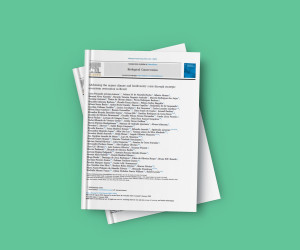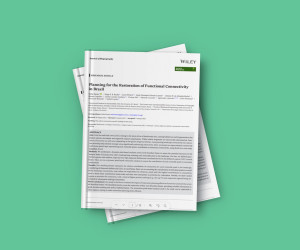News > News
28.10.15
Pastures enriched with biochar can grow up to 41% more
The use of biochar can increase productivity of pastures and help reforestation – this is a preliminary result of a study coordinated by the International Institute for Sustainability (IIS), in collaboration with Embrapa Agrobiology and the Norwegian Geotechnical Institute (NGI) conducted at the experimental site ‘Fazendinha’ of Embrapa Agrobiology in Seropédica (state of Rio de Janeiro).
Over five months, researchers have been testing the addition of biochar to two species of pastures, Brachiaria and Panicum. Preliminary results indicated that pasture with biochar grew more than the pasture with traditional fertilizer, a difference of 9.5% in the weight of the biomass samples: 322.7 grams versus 294.8 grams for samples with and without biochar, respectively. The highest increases in pasture biomass were observed in the treatment where biochar was associated with fertilizer and inoculant: 416.20 grams or an increase by 41% as compared with control.
“The results indicate that biochar has a potential to increase pasture productivity, especially when used together with fertilizer and inoculant. Biochar can also improve several key properties of soil, such as increase carbon content, reduce acidity and improve water holding capacity. Adding biochar to soils may therefore increase productivity, thus profits and reduce production costs (depending on biochar production costs), which is important for organic agriculture”, said Agnieszka Latawiec, Research and Project Director at IIS and a coordinator of the project.
Farmers associated with ‘Fazendinha’ will also be invited to join the project and in November 2015 some small-scale experiment will be started at cattle-ranching farm. Luiz Fernando Duarte de Moraes, researcher of Degraded Area Restoration at Embrapa Agrobiology, stresses the importance of this this research and partnership. “One of the advantages of our research is the evaluation of alternative forms to produce biochar, which can be adopted according to the characteristics of the rural property. In addition, we evaluated the use of biochar in organic agriculture or in small properties dominated by agro-ecological practices”, said Luiz Fernando.
Focusing on small-scale farming and the need for reforestation of rural properties, researchers are also testing biochar potential to facilitate reforestation of native species. The researchers analysed the interaction of biochar with three native species of the Atlantic Forest (Pau-jacaré, Tarumã and Ingá). Preliminary results indicate that the seedlings with biochar grew 40% more. “The results may have important implications for large-scale reforestation, which will have an even greater demand to meet the reforestation targets released by President Dilma during COP21”, said Jeronimo Boelsums, IIS assistant researcher and professor at Rural Federal University of Rio de Janeiro.
Another IIS project in collaboration with the Association of the Golden Lion Tamarin tests biochar in seedlings production of native species of Atlantic Forest. Among other potential benefits, biochar could help with water retention and survival of seedlings, which is very important not only for the owner of the nursery, but also if the reforestation is to be successful.
Production of biochar
Biochar was produced from the biomass residues of gliricídia in a small stove that allowed the material to be pyrolized. The product was then stored in a dry place before being incorporated to the soil. Until now biochar was produced in four types of stoves: brick stove, single drum, double drum and the simplest type: ‘a hole in the ground’, which was suggested by Professor Gerard Cornelissen (NGI) during the workshop “Sustainable Landscapes: reconciliating rural development and environmental conservation”, held at IIS in March 2015. Up to now, the most efficient stove was developed by Reginaldo Carvalho (single drum), the field technician of this project followed by brick stove, although brick stove takes longer to produce biochar than single drum.








